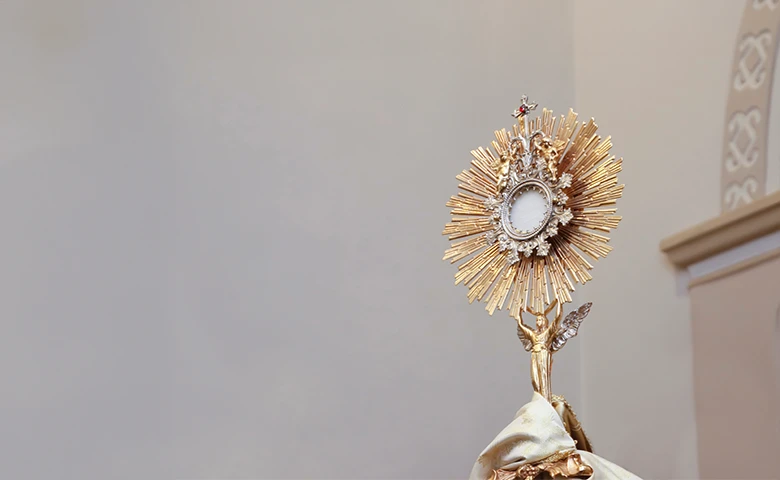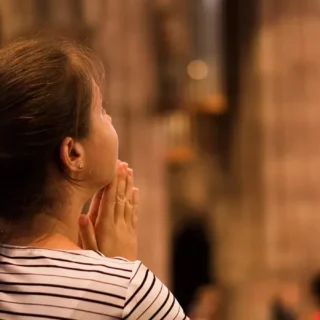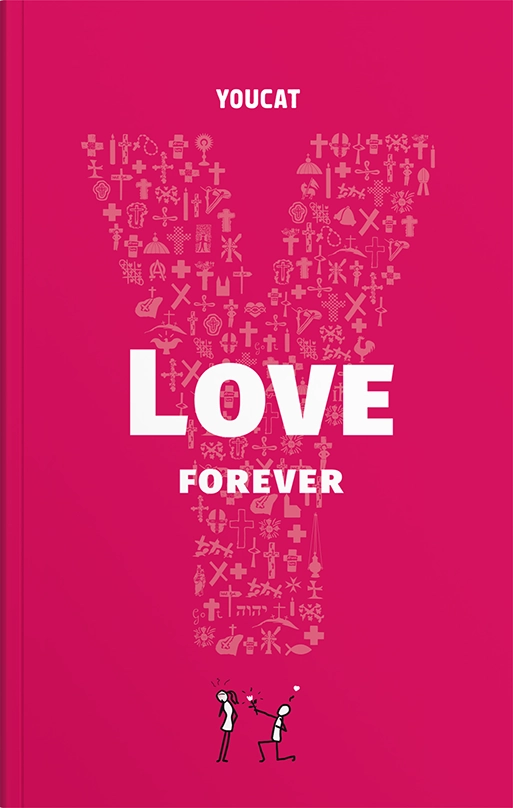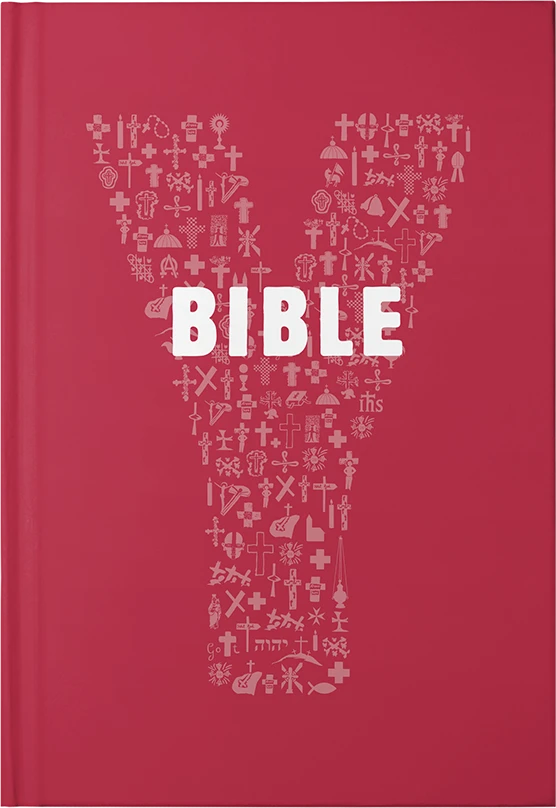

Minicat
Corpus Christi
The Second Vatican Council has more accurately called it the “Solemnity of the Body and Blood of Christ,” because we celebrate not only the gift of his Body, but also the gift of his Blood.
Today the Church celebrates the Feast of Corpus Christi. The Second Vatican Council has more accurately called it the “Solemnity of the Body and Blood of Christ,” because we celebrate not only the gift of his Body, but also the gift of his Blood.
Where does this feast come from? In the 13th century, St. Juliana of Liège (1193-1258) lived in Belgium. At the age of 16, she had a vision during a Holy Mass. She saw a brightly shining full moon crossed diametrically by a dark stripe. Later during adoration she asked the Lord about the meaning of the moon and its dark stripe. Jesus made her understand that the shining moon represented the festive cycle of the liturgical year. The Church’s Liturgical Year is a mysterious celebration of Christ on a course of a year – on each feast it picks out one mystery from Jesus’ life, work and contemplates it in a greater depth. Last week it was Trinity Sunday, on other days, for example, it is the birth of Christ at Christmas or his death and resurrection at Easter, his Ascension etc.
Jesus expressed that the dark stripe meant a feast was missing in the ecclesiastical year. It is important to know that the moon has been an image for the Church since the time of the Fathers of the Church. The moon has no light of its own, but it reflects the light of the sun in the night of the world and so illuminates the darkness. In the same way, the Church has no light of her own, because she is made up of human beings who carry no divine light of their own. However, through the sacrament of Baptism, God has taken up a place among us, and so we carry this divine light in the fragile vessels of our body. The task of the baptized as a church, is to reflect God’s light in this world. One of the ways in which the Church reflects Christ’s light is by celebrating the mysteries of Jesus’ life in the Year of the Church. This is why Jesus said to Juliana, “There is an important feast missing, the one that commemorates the institution of the Eucharist; where I remain present among you in body and blood.” Juliana then first shared the vision with her confessor and then with the bishop of Liège, who believed in the visions of the saint. So it came to pass that the feast could be celebrated locally soon afterwards. The later Pope Urban IV, who was archdeacon of the Diocese of Liège at the time of the visions, ultimately enforced what Jesus had already told St. Juliana, that Corpus Christi should be made a feast for the whole world to celebrate.
The Pope was not a resident in Rome then, but lived in Orvieto. Shortly before, a Eucharistic miracle had taken place there. A prelate had made a pilgrimage from Bohemia to Rome and had celebrated the Eucharist nearby Bolsena. During the Consecration, he was suddenly afflicted with sudden doubts as to whether he really had in his hands the Body and Blood of Christ. Then, to his utter shock, blood drops came out of the host during the breaking of the bread and fell on the corporal (the white cloth that is placed under the Eucharist). This removed his uncertainty. The miracle, traces of which were permanently visible on the corporal, quickly spread to Rome. So in 1264, the Pope began celebrating the feast of Corpus Christi in Orvieto and entrusted St. Thomas Aquinas to compose the liturgical texts for the feast. We still use these texts in the liturgy today, for example the beautiful hymn “Divinity deeply hidden, praying close to you”. Even to this day we still commemorate in Corpus Christi the legacy of Jesus, the giving of his body and blood, which in fact we already celebrate on Holy Thursday. However, on Holy Thursday we celebrate several mysteries of the faith together: the institution of the priesthood and the institution of the Eucharist, that is, the consummation of the whole mystery of salvation in this one sacrament. In Corpus Christi, we highlight one core aspect of the Eucharist and give special thanks to God for it, specifically, for the fact that Jesus gives himself to us as food in the Eucharist and will remain with us every day until the end of this life.
But how does He remain with us? It is principally in the Eucharist, in the symbols of bread and wine. This is why for almost 800 years we have adored the body of Jesus in the Blessed Sacrament of the altar (outside the Eucharist celebration), in which he is fully present with divinity and humanity. And this is also the reason why we make our adoration and love for Jesus on this day, when we carry him in the monstrance through the streets of our cities and towns. We want to show our gratitude to Him in the presence of the people and witness our faith in His presence. That is why, whenever it is possible, it is highly recommended to participate in a Corpus Christi procession. Whom else should we publicly confess if not to Jesus, the only One who can give us eternal life?
This year, the reading for the Liturgical year B, it does not focus on the body of Christ, as one would expect on the day of Corpus Christi, but on his blood. This has been much venerated over the centuries, but nowadays we have unfortunately partially lost this form of devotion, although it is actually very beautiful and important.
In the first reading, from Exodus 24, 3-8, we see Moses making the first alliance with Israel. Moses sacrifices animals, takes their blood, pours it in a basin and sprinkles half of the blood on the altar, which symbolizes God. He then reads the Ten Commandments to the people of Israel, which are in a sense the contract basis of this covenant, and asks if the people want to come into this alliance with God under these terms. The people then respond, “Amen, yes amen, we will do it.” As a sign of this alliance, Moses takes the other half of the blood and sprinkles it on the people. What happens with this sprinkling of the people and the altar with the blood of the animals?
It was an ancient Eastern rite that held two levels of meaning. On one hand, it indicated that both parties to the contract were willing to die for each other and hence entered into a blood kin, so to speak. Although this is only symbolically indicated in the Old Covenant because God, who is of pure spirit, has no blood and the people are only sprinkled with the blood of animals, but, since the blood came from a common source, it nevertheless expressed that both parties die for each other and are then raised and henceforth are “blood kin,” meaning that they belong to a common family. Furthermore, it is assumed that if one of the two breaks this pact, the same thing would happen to him as it would happen to the animals, i.e., as punishment for breaking the pact, he would have to give his life and shed his blood.
As it is well known, the people of God broke this agreement countless times throughout the Old Testament. One would have expected that Israel would have needed to perish. However, it only did symbolically, by going into exile. Israel had placed itself under a curse by agreeing to keep all the commandments and to die if they were broken. But that is precisely what God would not ultimately allow, for people to survive the exile and return to the land. Instead of delivering his people to eternal death, he himself became a man, an Israelite just like them, and shed his own blood in their place, and in all our places to forgive us from our sins.
We find this truth of faith, repeatedly, in other images. Like in the reading from the Letter to the Hebrews (cf. Heb. 9, 11-15). We are told that in Jesus we have a new high priest who does not limit himself figuratively sprinkling the altar with the blood of goats and bulls, like the priest of the Old Covenant. This is an analogy to the annual rite of forgiveness of sins in the Old Testament, in which once a year, on Yom Kippur, the priest would enter the interior of the temple and sprinkle the blood of bulls and goats on the altar to make an atonement for the people.
This was only figurative. The Letter to the Hebrews says that Jesus not only entered a temple built by human hands and not with the blood of goats and bulls, which can never really take away sins. On the contrary, he entered a completely different temple with his own blood, in the deepest part of the Trinity. And with this blood he mended our sins.
In the Gospel, we hear Jesus say to the disciples at the institution of the Eucharist, “This is my blood of the covenant, which is poured out for many” (Mark 14,24). Jesus defines the blood as the two aspects of the covenant mentioned above, the foundation of the blood relationship and the forgiveness of sins. Jesus’ humanity is the altar of the new covenant and divinity and humanity are simultaneously sprinkled with the blood of the Son of Man and thus become “blood kin.” In Jesus, God and man die for each other and are resurrected together. At the same time, the blood that Jesus pours out as atonement for our sins is in every Eucharistic celebration, so as the covenant is renewed, we are washed from our sins.
This new covenant can no longer be nullified by the sins of the people as the old one was. No, the New Covenant is an eternal understanding which man’s sin cannot destroy, since it is made in the blood of Christ, who has atoned for man’s sins for all time, and is made present among us in the Eucharist.
Whenever the priest raises the chalice, we can therefore pray: In this blood I wish to seal my baptismal covenant with you. Wash me by your precious blood, wash my conscience of his dead works, cleanse me from my sins, Lord, and protect me from the angel of death by your precious blood (cf. Ex 12,23.27).
Whenever we receive the Eucharist, we receive att he same time the Blood of Christ (the Church teaches that the Body and Blood of Christ are both fully present in both symbols, bread and wine, so we drink His Blood even if we receive only the bread) and we become in a very real way blood brothers with Christ and through Him children of the Father because His Blood flows in us. His blood cleanses us from all sin and his blood makes us priests, prophets and kings before our Lord, whom we can approach without fear because we are cleansed by his blood from all works of sin.

YOUCAT Digital
Discover our digital products, which will help you to grow in faith and become missionaries yourself.





